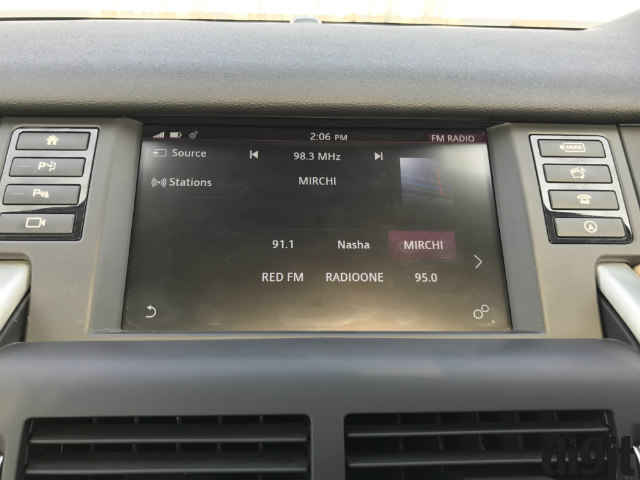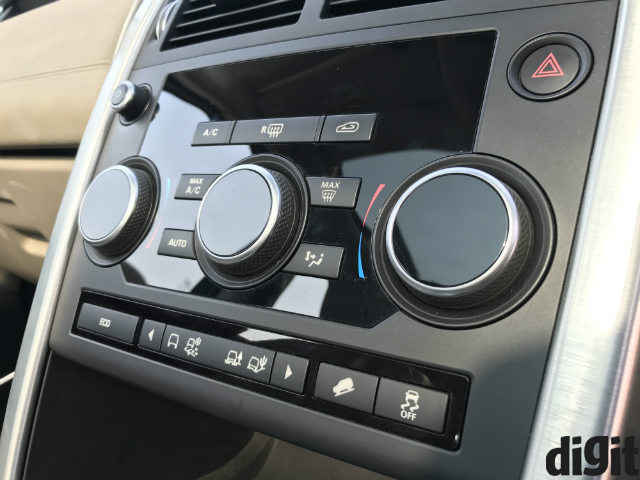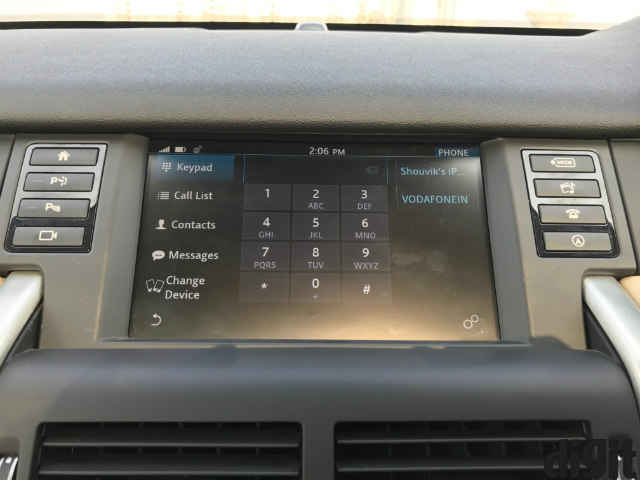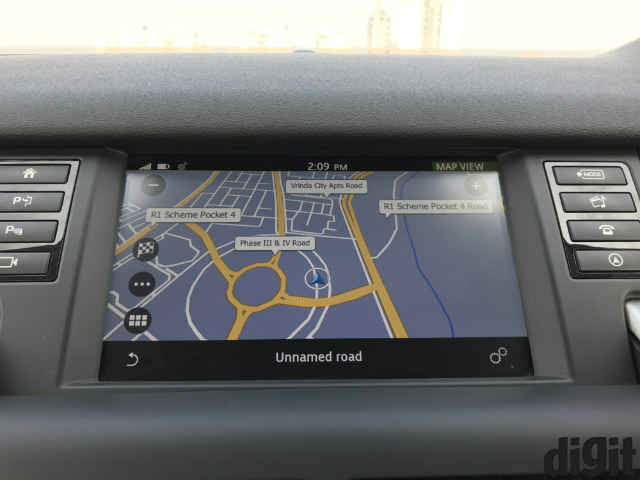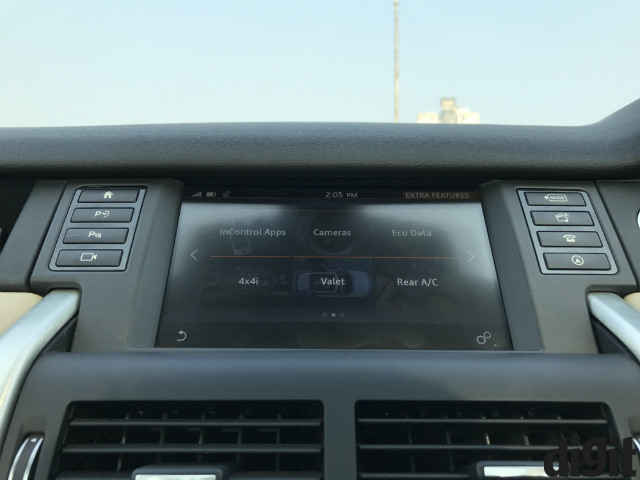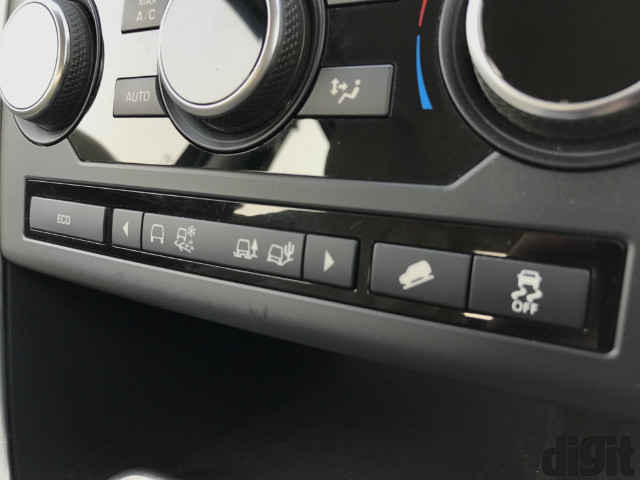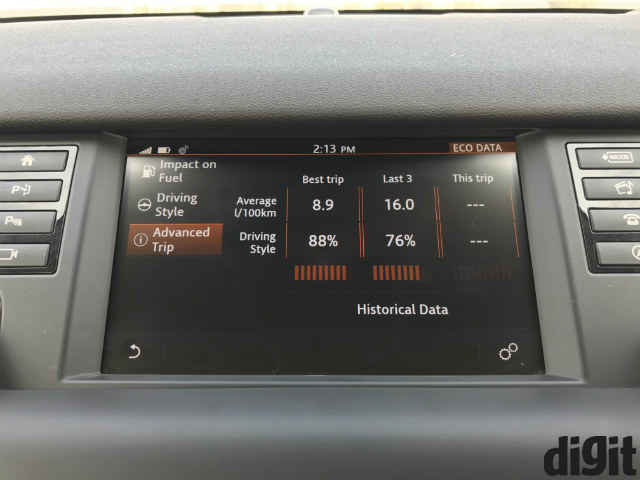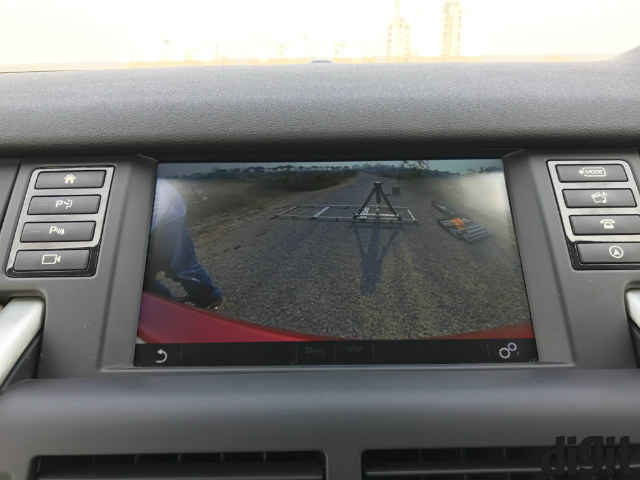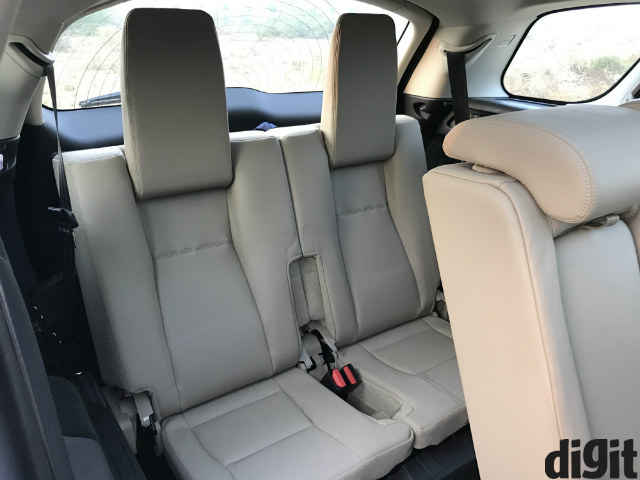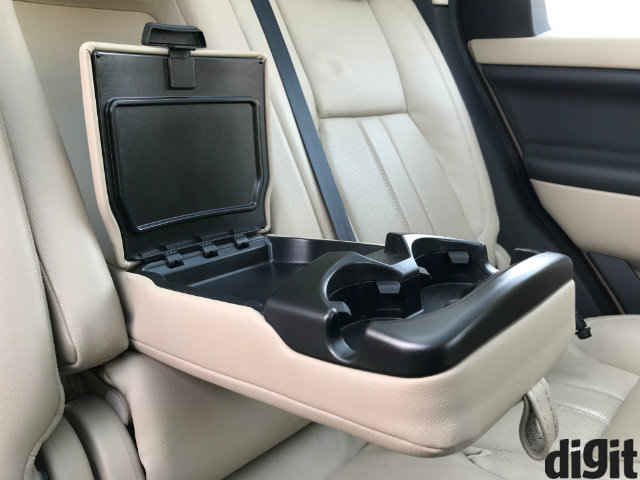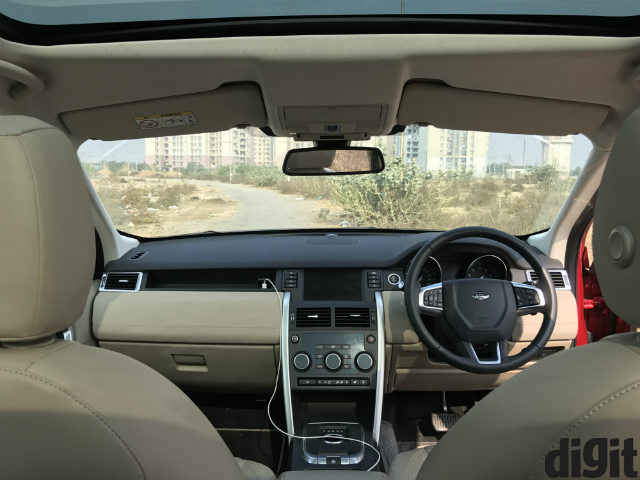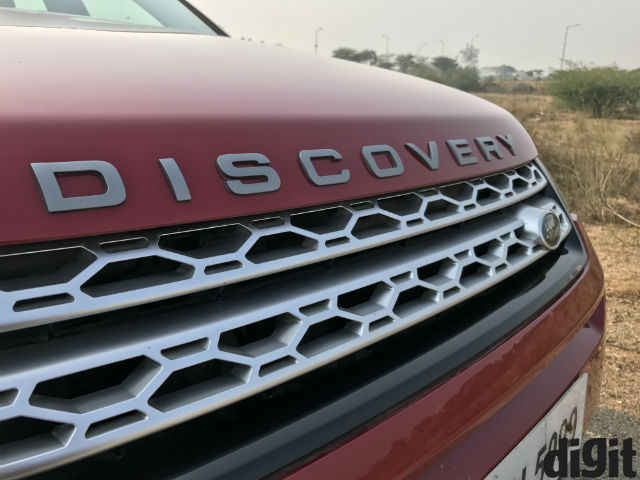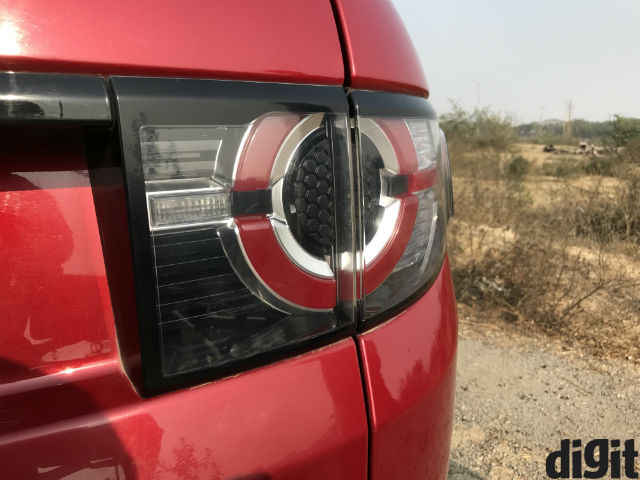Land Rover Discovery Sport technology and drive review: A class act
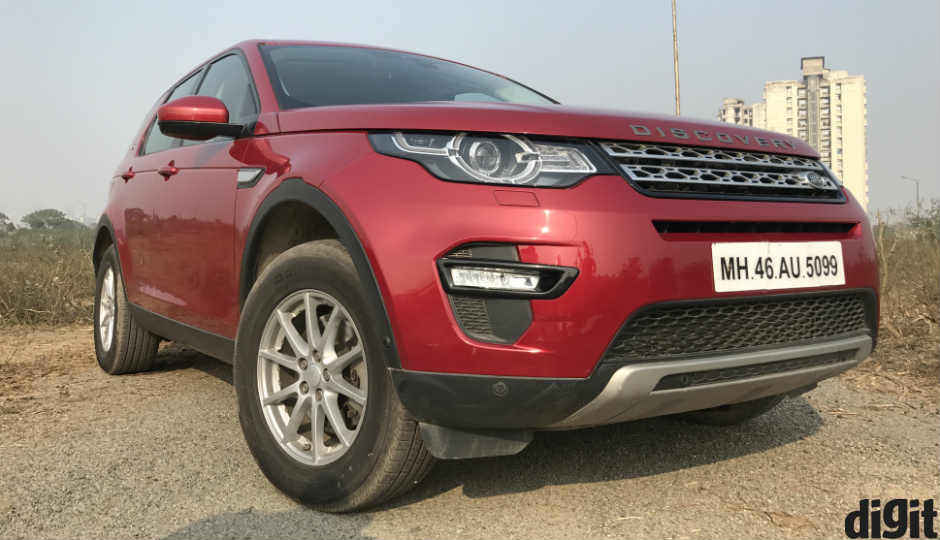
The new Land Rover Discovery Sport packs in a comprehensive dash of technology, along with presenting a stable, secure ride.
The Indian auto market has seen a definite drift towards bigger cars, and SUVs are steadily gaining pace in terms of auto sales. Since Tata’s takeover, Land Rover has also garnered serious intent in the Indian market, and on this note, we have a perfect fit in our hands – the Land Rover Discovery Sport.
Now, when you set off with a Land Rover, you do not really think about the exact power figures. The Discovery Sport is aimed at being more utilitarian, than being all about raw power or the panache of good styling. It even comes with a 5+2 seating arrangement for family trips, and from what we liked best, a generous dash of technology inside.
With all of this in sight, is the Land Rover Discovery Sport the ideal luxury SUV that strikes a balance between sensibility and panache? This is what we found.
Technology and Interiors
Step into the bright, airy cabin, and you are greeted by a host of controls inside the Land Rover Discovery Sport, that control literally every aspect of the car. Right from drive statistics to modes, infotainment setup, the sunroof and even the wipers, everything about the Discovery Sport lies within the reach of the driver’s seat, giving you a commanding vibe from the high driving position. With so many elements in sight, here’s looking at everything that the Land Rover Discovery Sport has on offer.
The central cluster
Music Playback
The petrol variant of the Land Rover Discovery Sport comes with 10 Meridian speakers offering surround audio. Six speakers are mounted on the two front doors, while the two rear doors house four speakers in total, and the subwoofer is rested up front, on the median line of the dash. Coupled with the noise isolation of the cabin, the speakers combine to deliver a theatrical surround audio effect of a carpeted hallway.
The speakers exhibit elaborate soundstaging, along with tight bass, and crisp highs and mids. There is a definitive clarity befitting of the car’s stature, one that would really impress you when you’re cruising along the highway to Riders on the Storm. On the central touch console, you get music settings to choose the direct of the audio’s throw (align it to any corner, or the centre), along with an equaliser to manually toggle bass, mids and highs. You can also choose speed-sensing volume, wherein setting it to low prevents the audio from blaring at slow speeds to audio city drives. You can also adjust traffic direction volume to fine tune what volume the directions are relayed at.
You get a solitary physical toggle and switch on the central pillar to turn on the audio, or switch it off. The toggle allows you to adjust volume, but unfortunately, there are no further controls for playback control on the central dash. The touch interface gives a music player, from which you can of course control the playback. You can also choose the source of music (FM/AM/USB/iPod/Bluetooth/aux) either from the touch panel, or by tapping on the Mode button to the top-right of the central display.
You can also control the music from the four direction buttons on the left panel of the steering wheel. The music interface is chosen to be functional than glitzy, which I personally feel is a good decision. The layout is simple, and packs in all controls within your reach. There are ample options for you to connect the phone with, with a USB port, aux and SD card slot placed in the central cubbyhole, along with standard Bluetooth connectivity. You can also download one of the recommended apps from Land Rover’s InControl app suite for on-screen app playback. All of this essentially ensures that your in-car music setup is rich, pleasant and comprehensive.
AC, Climate Control
You also get Climate Control, where you can give the Discovery Sport autonomy to adjust your in-car temperature in accordance to the climate outside. Alternatively, you get manual toggles for the air conditioning, which you can either control with the physical buttons on the central pillar, or from the touch interface. You can choose individual temperatures for the two climate zones within the car (Left/Right), and a central dial to adjust blower intensity. The LED temperature and fan speed displays look smart and add a dash of intuitiveness to the entire setup.
You can also choose to adjust rear air conditioning from the central console, where the temperature is in accordance to the front temperatures, and the blower speed can be adjusted manually. In what is a very useful addition, even the third row of seats get personal AC vents, and you get a physical toggle on the third row to adjust air flow.
Phone
Once you pair your smartphone to the central console, you also get a display of your calls and messages on the central console. You get access to a large keypad on the uber responsive, high resolution touchscreen from where you can easily dial calls. Alternatively, you can also access your contacts, call logs and messages, making in-drive communication really easy. The only element amiss here is voice control. Apart from that, the interface on the Discovery Sport’s central console is easy to operate and familiar, and there is no separate learning curve to getting accustomed to it.
While Android phones read messages automatically on the central console, iOS users will need to specifically allow Bluetooth access of messages for texts to show up on the central console. A statutory warning message precedes this particular tile, where it recommends you to not use communication modes while driving.
Navigation
The Land Rover Discovery Sport uses its own maps, powered by MapMyIndia. While the map interface itself looks slightly cluttered, it is fairly accurate and recognises roads and alternate routes well. It also re-routes fairly smoothly, and you get an easy interface to add details such as ‘Home’ and ‘Work’ to the navigation system. You can also add specific addresses from the hamburger menu to ease navigation, and the system provides both graphic and audio direction relays, which are accurate and well optimised. You also get directions relayed to the MID within the instrument cluster, where it shows the immediate next turn and the distance to it. The audio instructions alert you once at the initial point from where the turn is to be approached, once 200 metres before the turn and once at the turn itself, so your chances of getting the wrong turn is minimised.
You still do not get Indian accents for the navigation audio relay, which may make certain roads sound off to you. However, the relaying of direction details to the MID is an excellent addition, making it easy and convenient for the driver.
InControl
While that is all from the first four tiles of the infotainment setup, the second window offers six tiles to choose from. The first is InControl – Land Rover’s own take on in-car setups like Apple CarPlay. To activate InControl, you need to dock your phone in via USB, download the InControl app on your phone, and all compatible settings will be relayed to your central console. These apps include essentials such as contacts, reminders and calendar, along with a host of third party applications that basically cover most essential features. You get compatibility with apps such as Zomato for food, NDTV InCar for News, Hungama Drive for Music, NaviMaps for directions and Accuweather for climate details.
The list of apps is not comprehensive yet, and misses out on more popular apps. However, we expect this ecosystem to grow further in future, and as of now, the setup is convenient and easy to use, covering all necessary features within the system.
Drive controls
Along with all the entertainment features, you can also control the drive modes from the central 7-inch touch console. You can choose to switch all optimisations, which balances the car to default suspension, engine power and two-wheel drive setting. You can choose Eco mode, which optimises the car for best mileage delivery. Other four-wheel drive modes include Grass-Gravel-Snow, Mud and Sand, each of which optimises the suspension, the powertrain and the fuel input as per terrain.
Controls for the same are also laid on a linear strip below the AC controls at the bottom of the central pillar, with buttons to choose the modes.
Drive data
Following this are settings for Drive data, where you get statistics based on how you drive. The display is broken down into easy-to-gauge readings for mileage and efficiency of drive, and your drive metrics including braking and acceleration are gauged on a five-point meter. This is particularly easy to see how you’ve driven, and choose drive modes and transmission settings based on your driving characteristics. This is a convenient addition to go well with the drive controls, and gives you a comprehensive knowledge of how the car is performing.
Cameras
The Land Rover Discovery Sport also gives you access to the rear camera individually, which offers higher resolution than most other SUVs presently in the market. You also get adaptive guide rails with the rear camera, and proximity sensors which alert you accurately as per distance.
Valet
The last addition to the infotainment console is also a neat addition – Valet. This allows you to add a passcode, and activating the mode locks all the functions of your car apart from climate control. This ensures that your personal information is kept safe away from anyone else with access to your car, and satiates the paranoia in you. Valet mode accepts a four-digit passcode that locks the central console, and quite conveniently, you do not need to remember it forever. You will be asked to set a new code every time you activate it, eliminating the need for an additional passcode.
All of this wraps a comprehensive, complete inclusion of technology from the high resolution, responsive touchscreen, aided by the plethora of physical buttons strewn across the Discovery Sport. For instance, you get eight physical buttons around the central display – four on each side, to switch back to home, control park assist (more on this later), choose music, navigation or any of the modes should you wish to not use the touchscreen. The Land Rover Discovery Sport reinstates its stance here, as a premium SUV, and gives enough functional features as per your need.
Multi Information Display
The MID gives you access to all the car’s notifications and warnings, along with relaying the gear, engine temperature, fuel status, mileage, a digital speedometer, tripmeter, distance to empty, and other features that we detail below.
Park Assist
Beginning with Park Assist, the Land Rover Discovery Sport gives you three modes for intelligent parking – Parallel, Perpendicular and Park Exit. This makes use of the ten sensors around the car to gauge your surroundings while parking to adjudge how you should park the car, with the algorithms taking charge of the steering wheel in case you are stuck in a tight corner.
All the prompts are relayed on the colour MID, and is very easy to operate. Activating Park Assist requires you to tap on the Park button, second from top to the left of the central touchscreen. You can choose either parallel or perpendicular, and the car only asks you to switch the gears, while steering by itself. Park Exit is also neat and useful particularly considering the dimensions of the car, and works accurately almost always. The MID instructions are also easy to follow, making this a crucial feature both in terms of technology and safety.
Drive stats
In terms of drive statistics, you get the five-point guide in terms of acceleration, braking and mileage, relaying stats based on how you drive. The Land Rover Discovery Sport essentially adapts to the way you drive, alternatively giving you a comprehensive guide in terms of how to efficiently manage fuel consumption and overall car health.
Notifications
The main multifunctionality of the MID lies with relaying car statistics, notifications and more. You get graphic alerts for seat belt status of all passengers, car fluid warnings (brake, suspension, washer, etc.), wiper and light status, tyre pressure and more. Switching into the MID menu from the steering wheel gives you access to trip details, drive details, and how the car is set up. You can choose which sensors can display notifications to you (the essentials are always selected), select individual trips to see distance and mileage (the five last trips are stored here), alongside controlling which units are used in the MID. You can also control the lights, and all particulars of the information display. For all the LED alerts, Land Rover includes details about them in the soft version of the driver’s manual, which you can download and carry with you any time. All sensors and warnings can also be controlled from here.
Others
Seats
The Land Rover Discovery Sport gets electrically operated front seats, with six-way toggles on each. The front seats offer excellent spinal and lumbar support, hugging you comfortably and making you feel at ease even in long drives. The toggles are placed to the right side of the seats, and makes controlling them quite easy. By default, you get a commanding driving position, but you can easily adjust it to get more recline or more upright driving positions.
The middle row offers good headroom and thigh support, and ample legroom. With the front seats adjusted to my height of 5’11”, there was just about enough knee room for people of my height in the middle row. It is also convenient to seat three in the middle row, with minimal central hump. If you decide to seat only two, you get a central armrest with two cup holders and a flap that conceals a shallow depth tray, which you can use to keep small items, or food.
The third row, however, is best suited for kids. You sit low, in a steep, knee-up position. It gets uncomfortable in long drives, although short hauls should be fine. Interestingly, you get personal AC vents with an AC toggle, one USB port, one car charging port, and the boot/rear seat lamp that can be used for reading. You also get cup holders for rear passengers, and even though the space on the third row is cramped, there is no dearth of features inside.
Wipers
You get rain-sensing wipers on both ends, and get four-step adjustment for wiper intensity. You also get rear window defogger, giving you ample visibility across the car.
Lights and roof
The lights inside are operated with light touches up front, and switching on the central light turns on the rest of the cabin lights. You get six LEDs inside to deliver ample in-cabin lighting, and mood lighting in the crevices up front. Two LEDs flank the central LED, giving you more than ample lighting up front.
NVH and in-cabin material
Through all of this, it is the in-cabin noise, vibration and harshness control that makes you feel refined, composed, confident and at ease. In-car NVH is excellent, again reinstating the stance that this is a Land Rover that you are driving. In-cabin material feels up to class, with premium fabric inlays all over the car, and generous helping of premium leather on the doors and inlays.
The quality of dash also feels suave, and this ensures that your interior ride quality is maintained well. You get dual-stitched leather on the seats and door handles, which look quite premium on overall terms. The panoramic sunroof adds a sense of space under daylight, and gives you an added premium dash to the SUV.
Drive and Safety
The drive
All of this is powered by a 2.0-litre turbo petrol engine producing 237 brake horsepowers that can race the car up to 200kph. The engine produces 340Nm of torque, which kicks in at a modest 1750rpm. During our drives, we clocked best mileage of 11.2kmpl, and lowest of 5.95kmpl. The engine is peppy and quite responsive, and feels at ease while rumbling along in city or speeding down a highway.
The 9-speed ZF gearbox is smooth, although it feels a bit edgy between 1st and 2nd gears. You also get paddle shifters for more throttle response. Switching to Sport mode gives you added throttle, and you feel more power filter through. The powertrain itself is linear and stable, and you do not feel underpowered at any given point of time. It is, however, more aligned to be stable rather than aggressive, which defines the drive characteristic of the Land Rover Discovery Sport.
The suspension is slightly on the stiffer side, and softens as you switch to mud tracks from the drive modes. It is very well aligned for long highway drives, and gives the car added stability at higher speeds. The brakes are not too sharp, but are supple and firm so decelerating sharply on highway is not much of a fuss. However, you do need to hit the brakes hard.
While the 5+2 seating arrangement gets a space saver tyre, its pressure is not monitored by the car’s sensors. It’s only when you replace the 17-inch alloy that you deactivate the tyre pressure warning. Ground clearance of 212mm is ample, and the Discovery Sport’s status as an able off-roader is aided by 600mm wading depth.
The drive, to sum up, is comfortable and stable. The Discovery Sport ambles around the city with ease, and picks up good pace when on the highway, making it a truly versatile SUV.
Safety features
Reinstating focus on safety, the Land Rover Discovery Sport includes every safety feature you would need, including ABS, EBD, brake assist, eight airbags, xenon headlamps, impact beams, traction control, tyre pressure monitor, stability control, crash sensor and a rear camera. It includes 10 sensors around the car, which give 360-degree alerts in accordance to proximity. There are two-step alerts given to even in slow speeds, which ensure that you stay in comfortable clearance from your closest obstacle. All the sensors are monitored from the central computer, giving you a central view to make use of all the sensors around.
Our verdict
Technology plays a crucial element in making the Land Rover Discovery Sport a great overall experience. The premium in-car experience is amplified by a glorious audio setup, comprehensive information display, ample ports and vents, enough safety features and a suave cabin that ensure a great experience with each drive. It is a good example of how technology governs premium SUVs of today, in what is one of the most popular categories in automobiles today.

